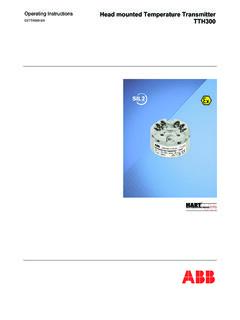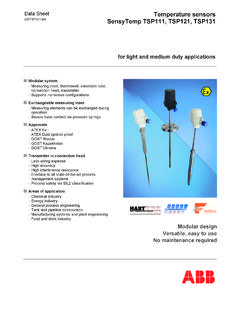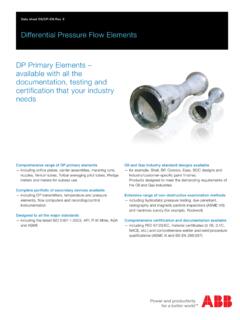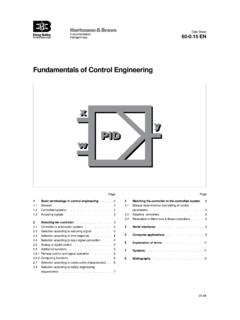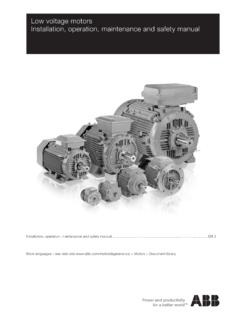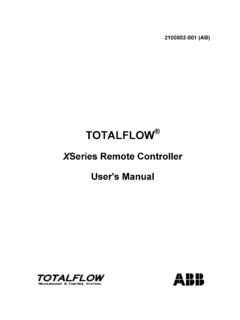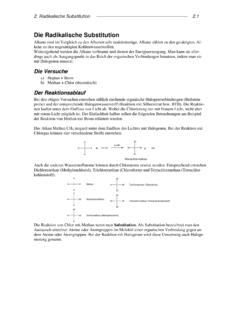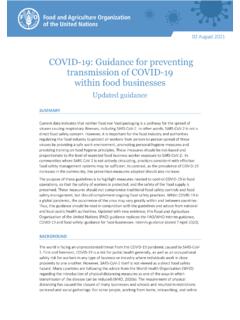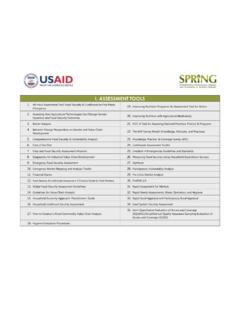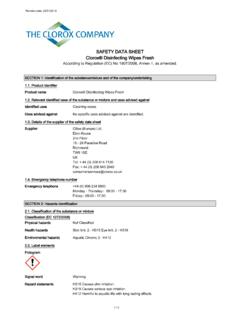Transcription of SAFETY DATA SHEET PROPAN-2-OL
1 Revision date: 22/10/2015 Revision: 04 SAFETY DATA SHEETPROPAN-2-OLSECTION 1: Identification of the substance/mixture and of the Product identifierProduct namePROPAN-2-OLProduct number461 Synonyms; trade namesIPA,IPS,SEC PROPYL ALCOHOL,ISOPROPYL ALCOHOL,CAFSOL 2,EVERBLEND15,AL11,IPA LOW ODOUR,ISOPROPANOL,ISOPROPANOL PC SSL,ISOPROPANOL PCSHL,ISOPROPANOL SSL,MX-THINNER HTS 83698,ISOPROPANOLSHELL,ISOPROPANOL EP,ISOPROPANOL (PHARMA),ISOPROPANOL ,ISOPROPANOL MIN. ,ISOPROPANOL (IPA),ISOPROPANOL C+,ISOPROPYLALCOHOL TT-I-735A,ISOPROPANOL PH SHLREACH registration number01-2119457558-25 CAS number67-63-0EU index number603-117-00-0EC Relevant identified uses of the substance or mixture and uses advised againstIdentified usesIndustrial Solvent In household and cosmetic chemical industry. Pharmaceuticals Chemicalsused in the synthesis and / or formulation of industrial Details of the supplier of the SAFETY data sheetSupplierUnivarAquarius House6 Mid Point Business ParkBradfordBD3 7AY+44 1274 1274 Emergency telephone numberEmergency Contact Number(Outside Office Hours)SGS - +32 (0)3 575 55 55 (24h)Emergency Contact Number(Office Hours)+44 1274 267346 Sds 2: Hazards Classification of the substance or mixtureClassificationPhysical hazardsFlam.
2 Liq. 2 - H225 Health hazardsEye Irrit. 2 - H319 STOT SE 3 - H3361/9 Revision date: 22/10/2015 Revision: 04 propan -2-OLEnvironmental hazardsNot ClassifiedClassification (67/548/EEC or1999/45/EC)F; R11. Xi; R36. Label elementsEC number200-661-7 Pictogram Signal wordDangerHazard statementsH225 Highly flammable liquid and Causes serious eye May cause drowsiness or statementsP210 Keep away from heat, hot surfaces, sparks, open flames and other ignition sources. Avoid breathing +P340 IF INHALED: Remove person to fresh air and keep comfortable for +P351+P338 IF IN EYES: Rinse cautiously with water for several minutes. Removecontact lenses, if present and easy to do. Continue Dispose of contents/container in accordance with national Other 3: Composition/information on SubstancesProduct namePROPAN-2-OLREACH registration number01-2119457558-25EU index number603-117-00-0 CAS number67-63-0EC number200-661-7 SECTION 4: First aid Description of first aid measuresInhalationMove affected person to fresh air at once.
3 Get medical affected person to fresh air and keep warm and at rest in a position comfortable forbreathing. Rinse mouth thoroughly with water. Give plenty of water to drink. Do not inducevomiting. If vomiting occurs, the head should be kept low so that vomit does not enter thelungs. Get medical contactRemove contaminated clothing immediately and wash skin with soap and water. Get medicalattention if any discomfort contactRinse immediately with plenty of water. Remove any contact lenses and open eyelids wideapart. Continue to rinse for at least 15 minutes. Get medical attention if any date: 22/10/2015 Revision: Most important symptoms and effects, both acute and delayedInhalationVapours may irritate throat/respiratory system. Symptoms following overexposure may includethe following: Coughing. May cause drowsiness or hazard if swallowed. Entry into the lungs following ingestion or vomiting may causechemical contactProduct has a defatting effect on skin.
4 Dryness and/or contactIrritating to eyes. Symptoms following overexposure may include the following: Indication of any immediate medical attention and special treatment neededNotes for the doctorNo specific recommendations. If in doubt, get medical attention 5: Firefighting Extinguishing mediaSuitable extinguishing mediaExtinguish with alcohol-resistant foam, carbon dioxide, dry powder or water extinguishingmediaDo not use water jet as an extinguisher, as this will spread the Special hazards arising from the substance or mixtureSpecific hazardsOxides of the following substances: Carbon. The product is highly flammable. Vapours areheavier than air and may spread near ground and travel a considerable distance to a sourceof ignition and flash Advice for firefightersSpecial protective equipmentfor firefightersWear positive-pressure self-contained breathing apparatus (SCBA) and appropriate 6: Accidental release Personal precautions, protective equipment and emergency proceduresPersonal precautionsFollow precautions for safe handling described in this SAFETY data SHEET Take precautionarymeasures against static discharges.
5 Provide adequate Environmental precautionsEnvironmental precautionsSpillages or uncontrolled discharges into watercourses must be reported immediately to theEnvironmental Agency or other appropriate regulatory Methods and material for containment and cleaning upMethods for cleaning upEliminate all sources of ignition. No smoking, sparks, flames or other sources of ignition nearspillage. Provide adequate ventilation. Absorb spillage with inert, damp, non-combustiblematerial. Flush contaminated area with plenty of water. Collect and place in suitable wastedisposal containers and seal securely. For waste disposal, see Section Reference to other sectionsReference to other sectionsFor personal protection, see Section 8. For waste disposal, see section 7: Handling and Precautions for safe handlingUsage precautionsAvoid spilling. Keep away from heat, sparks and open flame. Storage tanks and othercontainers must be earthed.
6 Avoid contact with skin and eyes. Use mechanical ventilation incase of handling which causes formation of date: 22/10/2015 Revision: Conditions for safe storage, including any incompatibilitiesStorage precautionsKeep away from heat, sparks and open flame. Store in tightly-closed, original container in awell-ventilated classFlammable liquid Specific end use(s)Specific end use(s)The identified uses for this product are detailed in Section 8: Exposure Controls/personal Control parametersOccupational exposure limitsShort-term exposure limit (15-minute): WEL 500 ppm 1250 mg/m Long-term exposure limit (8-hour TWA): WEL 400 ppm 999 mg/m WEL = Workplace Exposure LimitDNELI ndustry - Dermal; Long term systemic effects: 888 mg/kg/dayIndustry - Inhalation; Long term systemic effects: 500 mg/m Consumer - Dermal; Long term systemic effects: 319 mg/kg/dayConsumer - Inhalation; Long term systemic effects: 89 mg/m Consumer - Oral; Long term systemic effects: 26 mg/kg/dayPNEC- Fresh water; mg/l- Marine water; mg/l- Intermittent release; mg/l- STP; 2251 mg/l- Sediment (Freshwater); 552 mg/kg- Sediment (Marinewater); 552 mg/kg- Soil.
7 28 Exposure controlsProtective equipment Eye/face protectionThe following protection should be worn: Chemical splash goggles. EN 166 Hand protectionUse protective gloves. Nitrile rubber. EN 374 Other skin and bodyprotectionWear apron or protective clothing in case of protectionIf ventilation is inadequate, suitable respiratory protection must be worn. EN136/140/145/143/149 SECTION 9: Physical and Chemical Information on basic physical and chemical date: 22/10/2015 Revision: 04 propan -2-OLMelting point-88 CInitial boiling point and range82 - 83 C @Flash point12 CEvaporation flammability orexplosive limitsUpper flammable/explosive limit: 12 Lower flammable/explosive limit: pressure6020 Pa @ CVapour density2 Relative @ @ 20C CBulk densityData lacking. 59 184 109012 Solubility(ies)Soluble in coefficientlog Pow: temperature425 CDecomposition TemperatureData mPa s @ 20 CExplosive propertiesData propertiesNot Other informationRefractive at 20 CMolecular 10: Stability and ReactivityReactivityThe following materials may react with the product: Strong oxidising agents.
8 Strong Chemical stabilityStabilityStable at normal ambient temperatures and when used as Possibility of hazardous reactionsPossibility of hazardousreactionsSolvent vapours may form explosive mixtures with Conditions to avoidConditions to avoidAvoid heat, flames and other sources of ignition. Avoid excessive heat for prolonged periodsof Incompatible materialsMaterials to avoidStrong oxidising agents. Strong acids. Alkali metals. Amines. Aluminium. Hazardous decomposition productsHazardous decompositionproductsOxides of the following substances: 11: Toxicological information5/9 Revision date: 22/10/2015 Revision: Information on toxicological effectsAcute toxicity - oralAcute toxicity oral (LD mg/kg)5, (oral LD )LD >5000 mg/kg, Oral, RatAcute toxicity - dermalAcute toxicity dermal (LD mg/kg)5, (dermal LD )LD >5000 mg/kg, Dermal, RabbitSkin corrosion/irritationAnimal dataNot sensitisationRespiratory sensitisationNot sensitisationSkin sensitisationNot cell mutagenicityGenotoxicity - in vivoData is no evidence that the product can cause carcinogenicityIARC Group 3 Not classifiable as to its carcinogenicity to toxicityReproductive toxicity - fertilityData target organ toxicity - single exposureSTOT - single exposureData target organ toxicity - repeated exposureSTOT - repeated exposureData cause respiratory system irritation.
9 Vapours may cause drowsiness and of the product aspirated into the lungs through ingestion or vomiting may cause aserious chemical contactProlonged contact may cause dryness of the contactIrritating to 12: Ecological InformationEcotoxicityThe product is not expected to be toxic to aquatic ToxicityToxicityNot considered toxic to date: 22/10/2015 Revision: 04 propan -2-OLAcute toxicity - fishLC , 48 hours: >100 mg/l, Leuciscus idus (Golden orfe)Acute toxicity - aquaticinvertebratesEC , 48 hours: >100 mg/l, Daphnia magnaAcute toxicity - aquatic plantsEC , 72 hours: >100 mg/l, Scenedesmus Persistence and degradabilityPersistence and degradabilityThe substance is readily Bioaccumulative potentialBioaccumulative potentialThe product is not coefficientlog Pow: Mobility in soilMobilityThe product is soluble in Results of PBT and vPvB assessmentResults of PBT and vPvBassessmentThis substance is not classified as PBT or vPvB according to current EU Other adverse effectsOther adverse effectsNo data 13: Disposal Waste treatment methodsGeneral informationWaste should be treated as controlled waste.
10 Dispose of waste to licensed waste disposal sitein accordance with the requirements of the local Waste Disposal Authority. Do not puncture orincinerate, even when empty. Materials such as cleaning rags and paper wipes that arecontaminated with flammable liquids may self-ignite after use and should be stored indesignated fireproof containers with tight-fitting, self-closing methodsDispose of waste to licensed waste disposal site in accordance with the requirements of thelocal Waste Disposal 14: Transport UN numberUN No. (ADR/RID)1219UN No. (IMDG)1219UN No. (ICAO) UN proper shipping nameProper shipping name(ADR/RID)ISOPROPANOL (ISOPROPYL ALCOHOL)Proper shipping name(IMDG)ISOPROPANOL (ISOPROPYL ALCOHOL)Proper shipping name (ICAO)ISOPROPANOL (ISOPROPYL ALCOHOL)Proper shipping name (ADN)ISOPROPANOL (ISOPROPYL ALCOHOL) Transport hazard class(es)ADR/RID class37/9 Revision date: 22/10/2015 Revision: 04 propan -2-OLADR/RID subsidiary riskADR/RID label3 IMDG class3 IMDG subsidiary riskICAO class/division3 ICAO subsidiary riskTransport Packing groupADR/RID packing groupIIIMDG packing groupIIICAO packing Environmental hazardsEnvironmentally hazardous substance/marine Special precautions for userEmSF-E, S-DEmergency Action Code 2 YEHazard Identification Number(ADR/RID)33 Tunnel restriction code(D/E) Transport in bulk according to Annex II of MARPOL73/78 and the IBC CodeTransport in bulk according toAnnex II of MARPOL 73/78and the IBC CodeCat ZSECTION 15.
